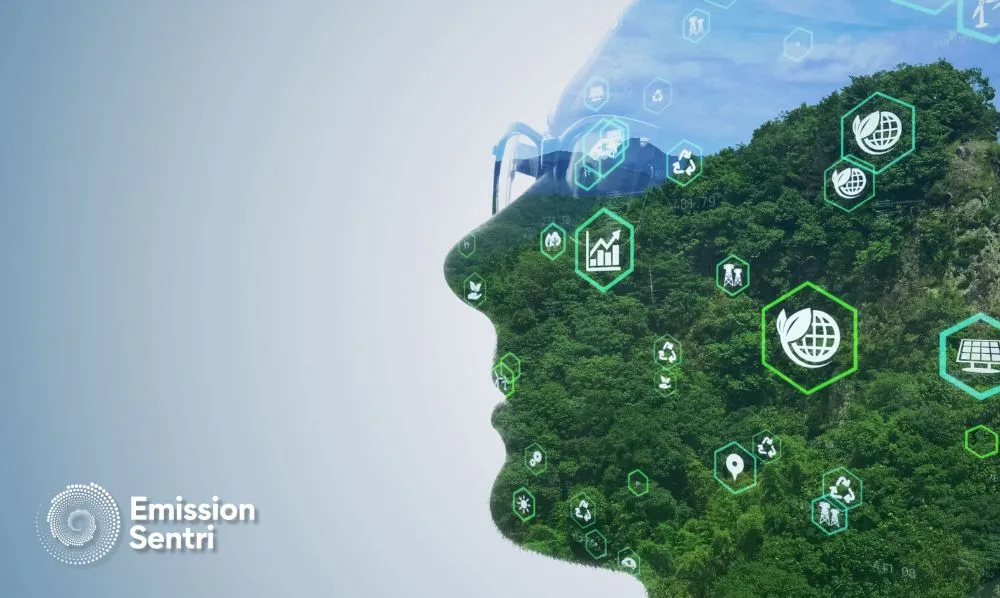Blog
What is Environmental Awareness in the Workplace?
Last updated: May, 2023

“Going green” is a fundamental shift in recognizing our collective responsibility for the planet.
That being said, environmental awareness in business doesn’t come at the sacrifice of your profitability.
It’s the opposite.
By seeking out more sustainable business practices and educating your employees about their impact, you can reduce emissions while growing your bottom line.
What is Environmental Awareness in the Workplace?
Environmental awareness in the workplace is understanding the environmental impact of your business operations and adopting practices to reduce your carbon footprint.
It focuses on creating a culture of sustainability where every employee knows:
- Their environmental impact.
- The company’s emission goals.
- How to action to minimize emissions.
However, the awareness extends beyond a simple recycling program. It’s a comprehensive strategy from reducing waste and energy consumption to embracing renewable resources and sustainable supply chains.
It also involves a shift in mindset, where your impact on the environment becomes integral to the decision-making process, encouraging innovation and efficiency that’ll help your profitability and the planet.
Lastly, environmental awareness in the workplace can help your company build a stronger relationship with customers who hold the same values and benefit from complying with sustainable regulatory requirements.
RELATED: What is Corporate Sustainability Training?
Why is Environmental Awareness in Business Important?
Environmental awareness is about more than reducing your carbon footprint. It’s about building a sustainable future where your company, employees, and community can thrive alongside the planet.
With corporations producing almost everything we buy, use, and throw away, adopting environmentally friendly practices can greatly impact climate change.
To put it in perspective, the top sources of greenhouse gas emissions are:
- Electricity and heat (31%)
- Agriculture (11%)
- Transportation (15%)
While your company might not be in any of these industries, you will likely use at least one, whether transporting your goods, commuting to work, or the office utility bill.
Then there’s the costs.
Green initiatives like energy efficiency translate to substantial cost savings. By switching to energy-efficient appliances and smart HVAC systems, you can lower your electricity bill and reinvest the money into other business areas.
According to IEA analysis, countries are set to save $680,000 (a 15% reduction) thanks to energy efficiency actions like building insulation and efficient appliances.
Do you still need more motivation?
Environmental awareness in business has a knock-on effect on your profitability. The modern customer values sustainability so much that:
- 55% will pay more for sustainable brands.
- 84% say they will avoid companies with poor environmental practices.
- 50% of global consumers say environmental factors influence their decision to trust a brand.
By switching to green practices, you can attract a broader customer base, foster loyalty, and give your company a competitive advantage.

How to Overcome The Challenges of Implementing Environmental Awareness in the Workplace
Implementing environmental awareness in the workplace is a good idea, but it does come with a unique set of challenges you’ll need to overcome.
Resistance to Change
People are hardwired to resist change.
Part of our brain (the amygdala) interprets change as a threat and releases the stress response of flight or fight.
That’s why even though employees want to help the environment, you might encounter resistance when implementing new sustainability policies.
The solution? Gleicher’s Formula.
Dissatisfaction x Vision x First Concrete Steps > Resistance
- Highlight the pain of dissatisfaction.
- Paint a vision of the future.
- Engage employees in small steps towards change.
RELATED: How to Promote Environmental Awareness in the Workplace
Perceived High Costs
The upfront expense of technologies and practices can be seen as a barrier.
The way around this problem is similar to the above.
You want to highlight the long-term cost savings and efficiency gains from reducing waste, conserving energy, and minimizing resource use.
To back up your arguments, use case studies of successful sustainability initiatives that have led to financial savings, tax breaks, government initiatives, and the positive ROI from sustainable investments.
RELATED: How to Choose The Right Corporate Sustainability Training Program for Your Business
Lack of Knowledge
A lack of understanding around environmental awareness will limit the success of your net-zero goals.
To avoid this scenario from playing out, it’s important to invest in environmental awareness training for employees and personalized recommendations to reinforce learnings.
Employee engagement platforms like Emission Sentri offer on-demand sustainability training with shareable certifications. No matter where your team is in the world or their schedule, employees can upskill at their own pace and learn how to contribute to reducing their emissions.
With Gen-AI personalized recommendations, your team will always know what actions to take and how they will directly impact the company’s net-zero progress.
RELATED: The Best Corporate Sustainability Training Programs
Towards a Greener Tomorrow
Fostering environmental awareness in the workplace is essential for a sustainable future. It helps preserve the planet for future generations while ensuring your long-term growth and profitability.